 W
WMarcin Bielski was a Polish soldier, historian, chronicler, renaissance satirical poet, writer and translator. His son, Joachim Bielski, royal secretary to king Sigismund III Vasa, was also a historian and poet. He was born of noble parentage on the patrimonial estate of Biała, Pajęczno County, in the Polish province of Sieradz. His alternate surname Wolski derives from his estate at Wola. One of two Polish writers of the same name, he was the first to use the Polish language, hence his designation as the father of Polish prose.
 W
WStanisław Czerniecki was a Polish soldier, property manager, chef and writer, best known as the author of Compendium ferculorum, albo Zebranie potraw, the first cookbook written originally in the Polish language. He was an ennobled burgher who held the titular offices of royal secretary and podstoli of Zhytomyr. During much of his life he served some of the powerful magnate houses of Poland, including the Wielopolski, Zamoyski, Wiśniowiecki and Lubomirski families. It was as head chef at the court of Prince Aleksander Michał Lubomirski that Czerniecki wrote his cookery book. As a designer of spectacular banquets, he has been called "the Polish Vatel" by Karol Estreicher, although Czerniecki did not meet the tragic fate of François Vatel, the head chef at the court of the Grand Condé.
 W
WJan Daniłowicz (1570–1628) was a Polish nobleman, voivode of the Ruthenian Voivodeship and grandfather of King Jan III Sobieski.
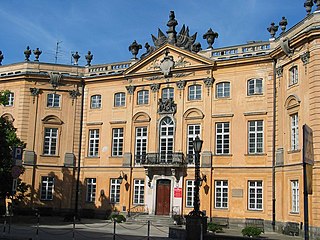 W
WJan Sigismund von Deybel Hammerau or Johann Sigmund Deybel was a Rococo architect from Saxony mainly active in Poland. He also served as a captain then as a major (1746) in the Polish artillery - his son was the general Krystian Godfryd Deybel de Hammerau.
 W
WWojciech Bartos(z) Głowacki (1758–1794), known also as Bartosz Głowacki, was a Polish peasant and the most famous member of the kosynierzy during the Kościuszko Uprising in 1794. Born as Wojciech Bartosz, he became a Polish national hero during the battle of Racławice on 4 April 1794, when he captured a Russian cannon by putting out the fuse with his hat. For this, he was promoted to the rank of 'chorąży' and received the surname 'Głowacki'. He was mortally wounded during the battle of Szczekociny on 6 June that year. Since then he has become one of the symbols of the Uprising and Polish valor.
 W
WAleksander Korwin Gosiewski de armis Ślepowron, was a Polish nobleman, military commander and diplomat, Lithuanian Field-Quartermaster since 1630, Palatine-Governor of Smolensk from 1625, Lithuanian Great-Quartermaster since 1615, Speaker of the Parliament in 1613, Great-Secretary of the Grand Duchy of Lithuania from 1610 and District-Governor of Wieliż, Puńsk, Kupise, Biel, and Markowa.
 W
WAlexander Guagnini was an Venetian-born Polish writer, military officer, chronicler and historian of Italian heritage. He is known as a Crown Rotmistrz of Poland and Commandant of Vitebsk. Guagnini fought for the Polish–Lithuanian Commonwealth in the Livonian War and the Moldavian Magnate Wars.
 W
WCount Hans Johann Moritz Hauke was a Polish general and professional soldier of German extraction. He was a member of the Hauke-Bosak family.
 W
WHetmans of the Polish–Lithuanian Commonwealth were the highest-ranking military officers, second only to the King, in the Polish–Lithuanian Commonwealth. The first Polish title of Grand Crown Hetman was created in 1505. The title of hetman was given to the leader of the Polish Army and until 1581 it was awarded only for a specific campaign or war. Later it became a permanent title, as did all the titles in the Kingdom of Poland and Polish–Lithuanian Commonwealth. It could not be revoked unless treachery had been proven. Hetmans were not paid for their services by the Royal Treasury.
 W
WJan Wilhelm Hiż was a Polish military officer, colonel of the Crown Guard.
 W
WPrince Aleksander Jan Jabłonowski was a Polish nobleman.
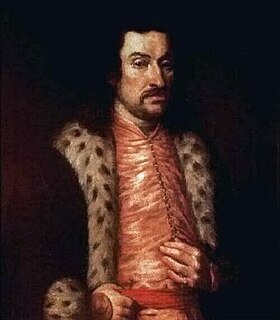 W
WPrince Jeremi Wiśniowiecki nicknamed Hammer on the Cossacks, was a notable member of the aristocracy of the Polish–Lithuanian Commonwealth, Prince of Wiśniowiec, Łubnie and Chorol in the Crown of the Kingdom of Poland and the father of the future King of Poland, Michael I.
 W
WJan Kiliński was a Polish soldier and one of the commanders of the Kościuszko Uprising. A shoemaker by trade, he commanded the Warsaw Uprising of 1794 against the Russian garrison stationed in Warsaw. He also became a member of Polish provisional government.
 W
WSamuel Kmicic was a nobleman (szlachcic) from Grand Duchy of Lithuania in the Polish–Lithuanian Commonwealth. He held the ranks of colonel (pułkownik) in the Royal Army, chorąży (ensign) of Orsza and Grand Lithuanian Guardian.
 W
WKazimierz Konopka was a Polish Jacobin, secretary of Hugo Kołłątaj, officer in the Polish Legions, aide-de-camp of Jan Henryk Dąbrowski. He gained notoriety for his involvements in the unrest and hangings in Warsaw during the Kościuszko Uprising.
 W
WSamuel Korecki, Ruthenian duke, nobleman (szlachcic) of the Polish–Lithuanian Commonwealth, adventurer and military commander carrying a titular rank of colonel. His coat of arms was Pogonia. His spent his life as a military men, fighting both private and state sponsored wars.
 W
WJan Dobrogost Bonawentura Krasiński was a Polish nobleman (szlachcic).
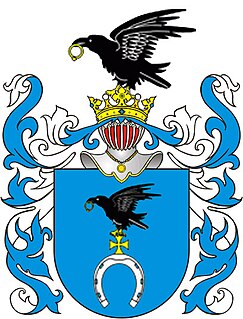 W
WCount Kazimierz Krasiński (1725–1802) was a Polish noble, politician and patron of art. He was the son of Antoni Krasiński and Barbara Zielińska.
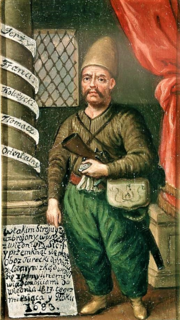 W
WJerzy Franciszek Kulczycki of the Sas coat of arms was a Polish nobleman and diplomat of Ruthenian descent. For his actions at the 1683 Battle of Vienna, when he managed to get out of the besieged city to seek help, he was considered a hero by the local people. According to legend, he is often cited as starting the first café in the city in 1683, using coffee beans left behind by the retreating Ottoman Turks. However, more recent sources suggest that the first coffeehouse in Vienna was opened by the Armenian Johannes Theodat in 1685.
 W
WSamuel Łaszcz (1588–1649), of the Prawdzic Coat of Arms, was a famous nobleman in the Polish–Lithuanian Commonwealth, with a family estate in Łaszczów. He held the positions of Starosta of Owrucz, Crown Grand Standard-bearer, and Crown Great Guard. He served as a military commander and was given the nom de guerre "zagończyk", but later became infamous as an outlaw. He was known for his smile and quick wit, and allegedly introduced a traditional Polish haircut which bears his name.
 W
WGuillaume Levasseur de Beauplan or William le Vasseur de Beauplan was a French-Polish cartographer, engineer and architect.
 W
WAleksander Józef Lisowski HNG was a Polish–Lithuanian noble (szlachcic), commander of a mercenary group that after his death adopted the name "Lisowczycy." His coat of arms was Jeż (Hedgehog).
 W
WFeliks Walezjusz Władysław Łubieński was a Polish politician, jurist, Minister of Justice in the Grand Duchy of Warsaw, starosta of Nakieł, a member of the Friends of the Constitution and a Prussian count. With the Code Napoleon, he introduced civil marriage and divorce in traditionally Catholic Poland.
 W
WPrince Stanisław Lubomirski was a Polish nobleman (szlachcic).
 W
WZbigniew Morsztyn was a Polish poet.
 W
WCount Franciszek Maksymilian Ossoliński was a Polish nobleman, politician, diplomat and a patron of arts.
 W
WPrince Janusz Ostrogski was a Polish-Lithuanian noble and statesman. He served as a voivode of Volhyn (1584-1593), as a castellan of Kraków, and as a starosta of Bohuslav, Biała Cerkiew, Czerkasy and Kaniów, Perejasław and Włodzimierz.
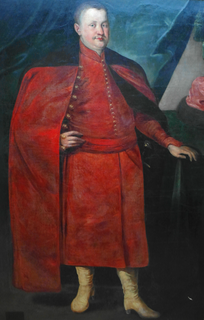 W
WKonstanty Wasyl Ostrogski was a Ruthenian Orthodox magnate of the Polish–Lithuanian Commonwealth, a prince, starost of Volodymyr-Volynskyi, marshal of Volhynia and voivode of the Kiev Voivodeship. Ostrogski refused to help False Dmitriy I and supported Jan Zamoyski.
 W
WMikołaj Ostroróg (1593–1651) was a Polish–Lithuanian szlachcic (nobleman), politician and general.
 W
WJan Chryzostom Pasek of Gosławice (c.1636–1701) was a Polish nobleman and writer during the times of the Polish–Lithuanian Commonwealth. He is best remembered for his memoirs (Pamiętniki), which are a valuable historical source about Baroque sarmatian culture and events in the Commonwealth.
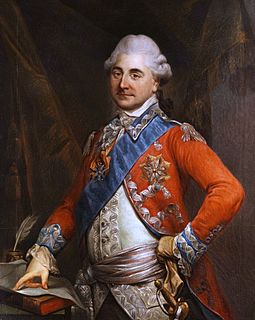 W
WStanisław II August, known also by his regal Latin name Stanislaus II Augustus, was King of Poland and Grand Duke of Lithuania from 1764 to 1795, and the last monarch of the Polish–Lithuanian Commonwealth.
 W
WMikołaj Radziwiłł, Lithuanian: Mykalojus Radvila also known as Mikołaj Radziwiłł The Seventh (1546–1589) was Reichsfürst of the Holy Roman Empire and a Polish–Lithuanian noble (szlachcic), Great Chamberlain of Lithuania in the Grand Duchy of Lithuania and later in Polish–Lithuanian Commonwealth. Voivode of Nowogródek Voivodeship, starost mozyryski and merecki. Member of the Radziwiłł family. He was a Calvinist.
 W
WFryderyk Sapieha was a Polish-Lithuanian noble from Polish–Lithuanian Commonwealth. Voivode of Mścisław (1647-1650), podkomorzy of Vitebsk, starost of Ostryń. Studied in Vilnius and Ingolstadt. Deputy to Sejm in 1624. Fought in the Polish-Swedish War (1625–1629) and Smolensk War with Muscovy (1633-1634).
 W
WJan Stanisław Sapieha was a Polish-Lithuanian noble, starost of Słonim, Court Marshal of Lithuania from 1617, Great Lithuanian Marshal from 1621.
 W
WJózef Sawa-Caliński was a Polish noble and a prominent leader of the Confederation of Bar, a movement aimed against the Polish king and his close relations with Russia.
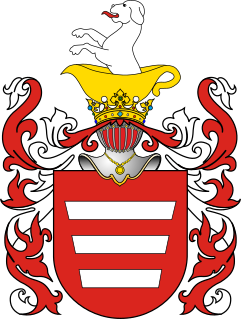 W
WMikołaj Struś (1577–1627) was a Colonel of the Polish Army, a starosta and commandant of the Polish-Lithuanian garrison in the occupied Moscow Kremlin. He was the last known member of the Strus family of Komarow-Osada. His father was Jakub Strus, and mother was Barbara Potocka.
 W
WMaciej Stryjkowski was a Polish historian, writer and a poet, known as the author of Chronicle of Poland, Lithuania, Samogitia and all of Ruthenia (1582). The work is generally considered to be the first printed book on the history of the Grand Duchy of Lithuania.
 W
WAdam Tarło (1713–1744) was a Polish nobleman (szlachcic).
 W
WJakub Wejher, was a member of the Polish line of the Weyher family, a Count of the Holy Roman Empire and member of the Polish–Lithuanian Commonwealth szlachta (nobility). His coat of arms was Wejher. Wejher was the Castellan of Puck and Voivode of Malbork (Marienburg) from 1643–1657, the Castellan of Chmielno, and the Starost of Człuchów, Kiszporek, Bychów and Brzechowo. He is remembered as a pious and tolerant magnate and an experienced military leader.
 W
WJan "Sobiepan" Zamoyski (1627–1665) was a Polish nobleman (szlachcic), magnate.
 W
WPrince Wladysław Dominik Zasławski-Ostrogski was a Polish nobleman (szlachcic) of Ruthenian stock. Prince of the Princely Houses of Poland, Ostroh Ordynat, Grand Koniuszy of The Crown.